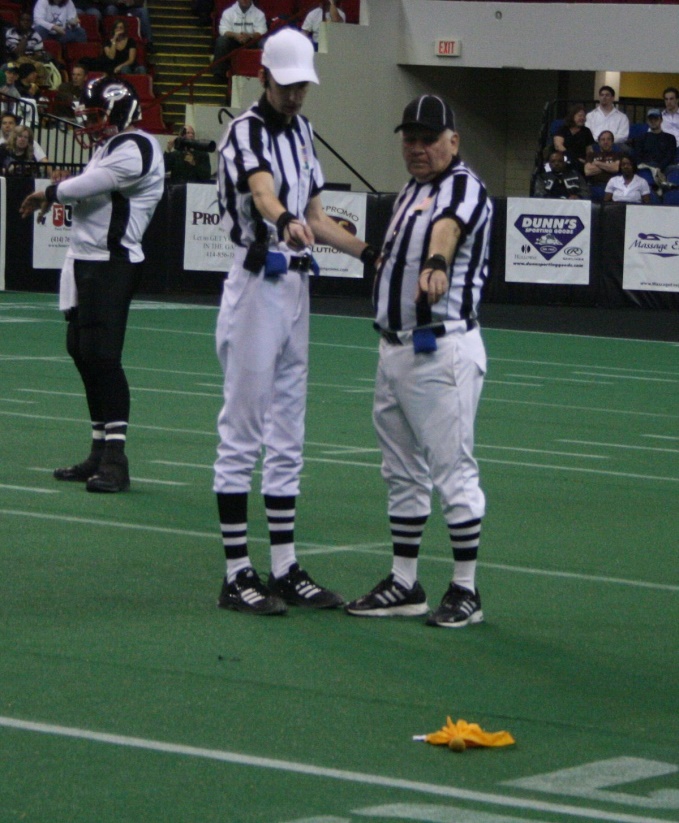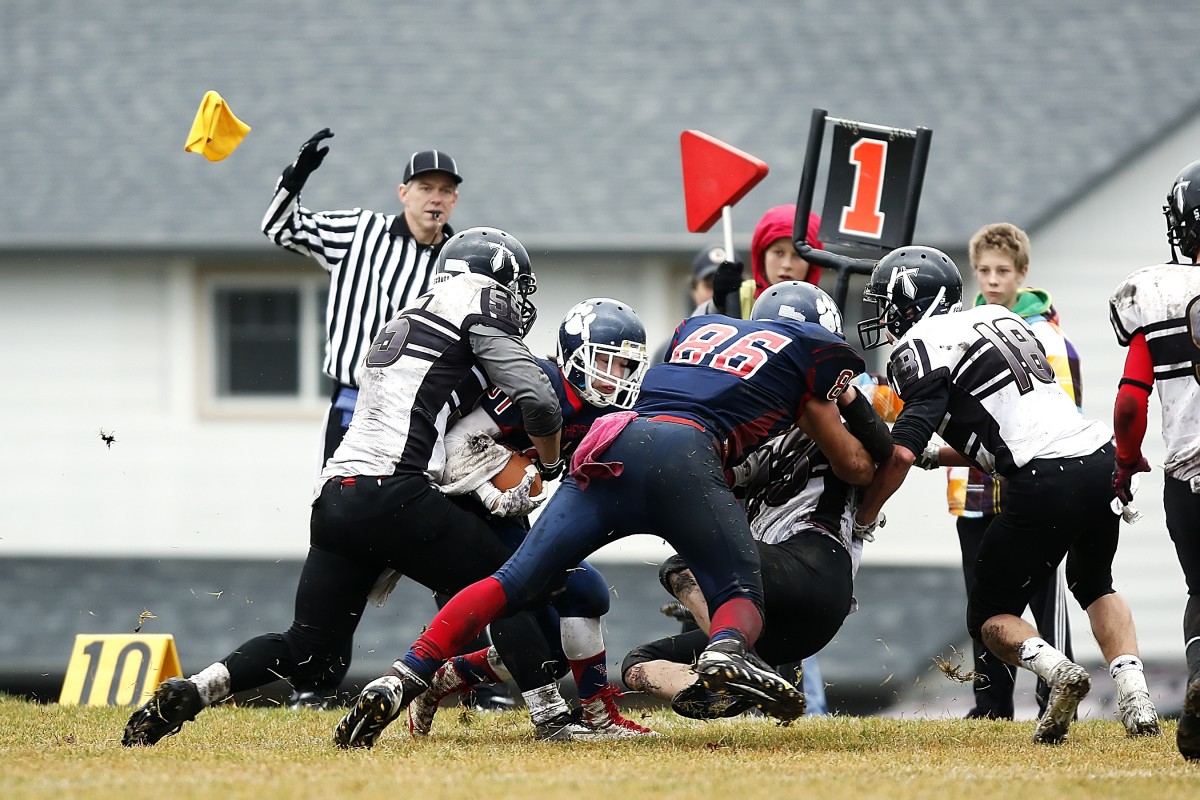Officiating and Penalties
Officials play a huge part in the game of college football. They are in charge from 90 minutes before kickoff until the head referee declares the game over.
They manage the game. They call fouls and assess penalties on individual players and / or coaches / sidelines. They can disqualify or eject a player or coach from the game.
Let's look at other responsibilities of the officiating crew.
In college football, 7 officials are used, each with a different assignment for various parts of the field. The head official is the referee, who has final decision on calls and who announces the fouls and penalties to the spectators.
 Referees discuss the reason for the flag
Referees discuss the reason for the flagAt least 3 officials have to be on the field 90 minutes before kickoff. They must inspect the field and be sure everything is correct. The rest of the officials must be on the field 40 minutes before kickoff.
At least 60 minutes before the kickoff, each team is responsible for providing 6 game balls to the officials. The balls must be inspected and measured for compliance with regulations.
Teams must be prepared to provide more game balls to be inspected if conditions warrant (Ie a rainy or muddy game). Balls cannot be “marked” for a specific player… that is a foul.
It is illegal to have intentional, forcible contact with an official. That constitutes unsportsmanlike conduct and carries a 15-yard penalty, automatic first down for the opposing team, and ejection from the game .
Incidental contact, like when a player is blocked and his momentum carries him into an official, is not a foul.
For more information and specifics about the officiating role in college football, look up the Football Officials Manual, printed under the jurisdiction of College Football Officiating, LLC.
 The referee sees something that merits a flag
The referee sees something that merits a flagWhen the
referees start throwing their bright yellow flags onto the field it means,
quite simply, that someone has done something wrong or disallowed by the Rule
Book (NCAA.org). There are a lot of fouls (or “infractions” as some announcers
call them). The fouls can be broken down into three broad categories:
3. Unsportsmanlike Conduct fouls
The number of yards a team is penalized varies based on the severity of the foul. The offending team will be penalized 5, 10, or 15 yards.
Some fouls also mandate a loss of down or an automatic first down. The most severe fouls require a player to be disqualified or ejected from the game.
Two things to remember when talking about fouls and penalties:
1. If the foul called is on an offensive player, the ball is moved back the designated number of yards. This means the offense has more yards to go to obtain a first down.
2. If the penalty called is on the defense, the ball is moved forwards, leaving less yards for the offense to make a first down. Sometimes the penalty yardage will give the offense a first down.
For simplicity's sake, let's look at each category of fouls separately as listed above.